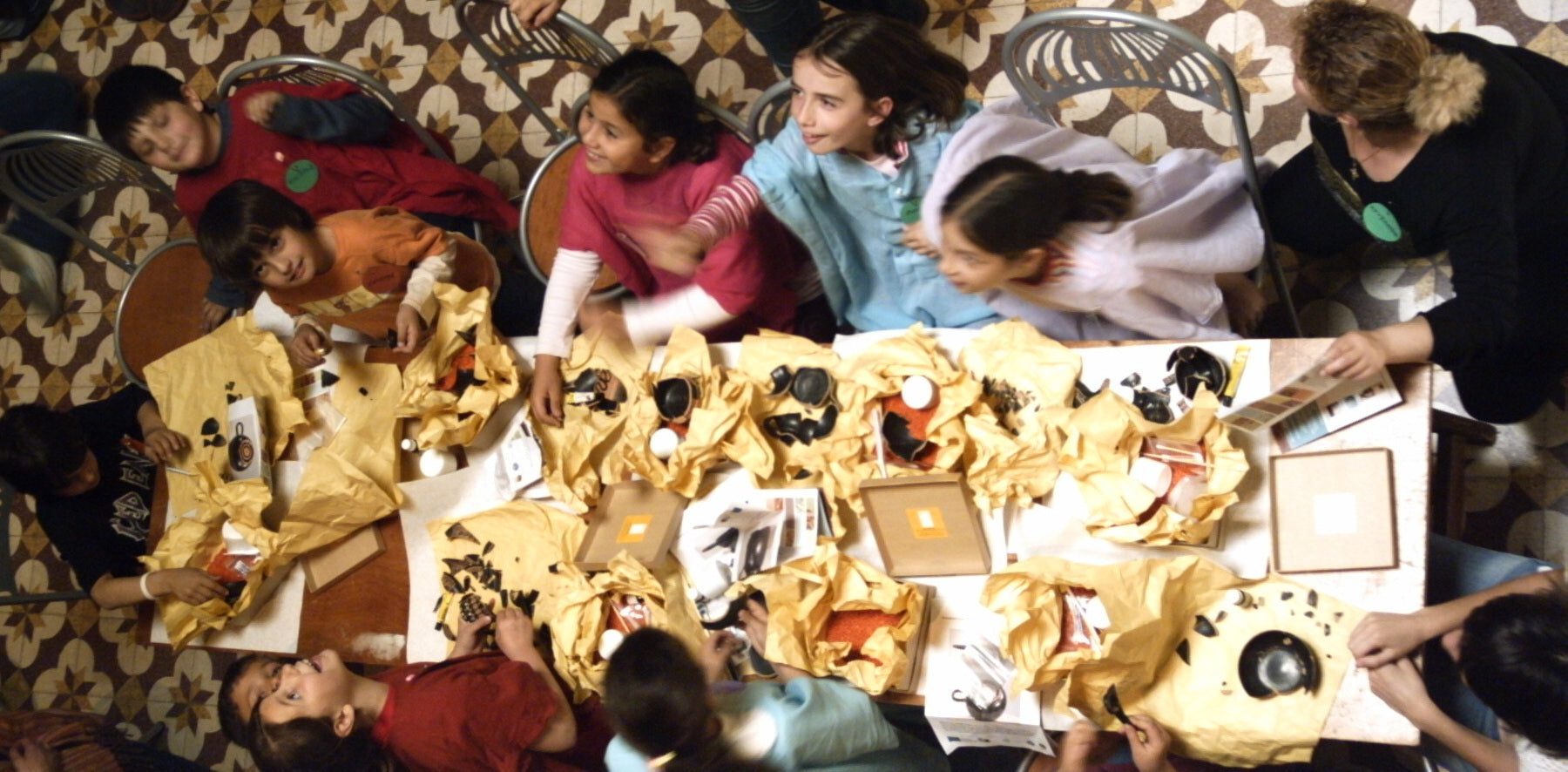
Guardians of History
How faithful reproductions can help fight illicit antiquities trade
When we founded THETIS Authentics 25 years ago, one of our guiding principles was the belief that reproducing ancient ceramics using original techniques could one day help combat the illicit trade in antiquities. From the very beginning, we were committed to three key ideas:
-
Demystifying private collections that include artefacts of uncertain or undocumented origin,
-
Educating the public—especially children—about the importance of archaeological context,
-
And offering high-quality alternatives to collecting original antiquities.
One of our first educational milestones came in May 2009, with the opening of the new Acropolis Museum. To mark the occasion, we introduced our first digging kit, inspired by the ancient practice of ostracism—a democratic process unique to classical Athens. Children would dig through a mixture of sand and plaster to discover a black-glazed sherd bearing an ancient name, written in authentic-style lettering.
The experience was so realistic that we grew concerned: could it unintentionally encourage children to search for ancient fragments at real archaeological sites? This led us to include a clear message with every kit:
“The collection of sherds and other artefacts from archaeological sites destroys our history.
By collecting high-quality, tagged authentic reproductions, you help restrain illicit traffic in antiquities.”
To further safeguard our work, we developed an invisible tagging system in collaboration with NCRC Demokritos and the Benaki Museum in Athens. The Benaki Museum Shop became the first to present a curated collection of our ceramic artefacts—a collaboration that continues to this day.
One idea led to another. Our educational approach inspired the EU project “Witness the Past,” which focused on raising awareness through hands-on learning. As part of this initiative, we created a puppet show based on our best-selling THETIS doll, the plangona—a bell-shaped doll inspired by Boeotian prototypes.

In May 2012, we opened the ATTIC BLACK shop in the heart of Athens. One of our early aspirations was to establish a European network under the name “Witness the Past”—a platform to address the problem of illicit trafficking more openly. Although the network was never realized, we have continued our mission independently ever since.
To further raise awareness, we began—upon request—to reproduce decorated vases of unknown provenance that had been sold at major auctions in Europe and the U.S. These pieces are offered at just 1-2% of their auction prices. A notable example is a striking black-figure lekythos by the Taleides Painter, originally sold for around €75,000 in Geneva. We reproduced it with care and respect. Since then, nearly a dozen signed and numbered vases have followed.
We never use the words copy or replica. Our works are handmade and hand-painted, and no two can ever be exactly alike. Yet they remain faithful to ancient techniques—and many, we believe, can stand proudly beside the originals.
They are a statement of principle:
Antiquities belong in museums. They deserve to be exhibited, surrounded by their archaeological context.
By offering meaningful alternatives—faithful, ethical, and educational—we hope to contribute to a future where the past is preserved, understood, and respected.


Leave a comment